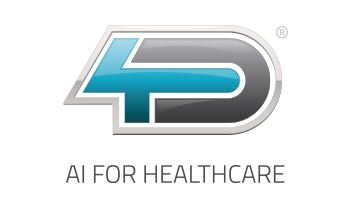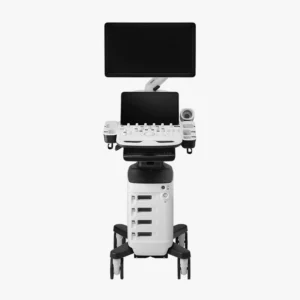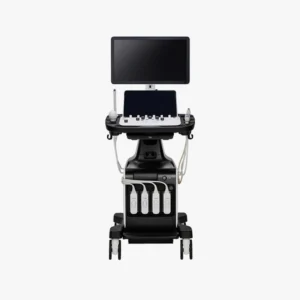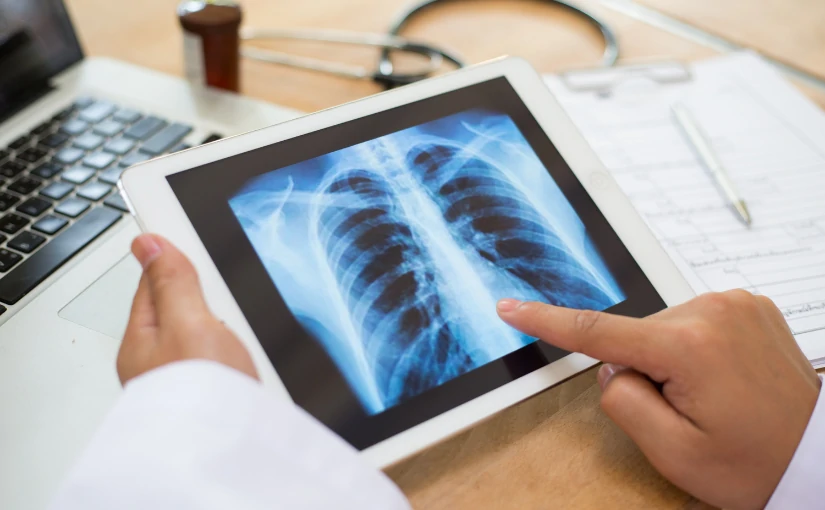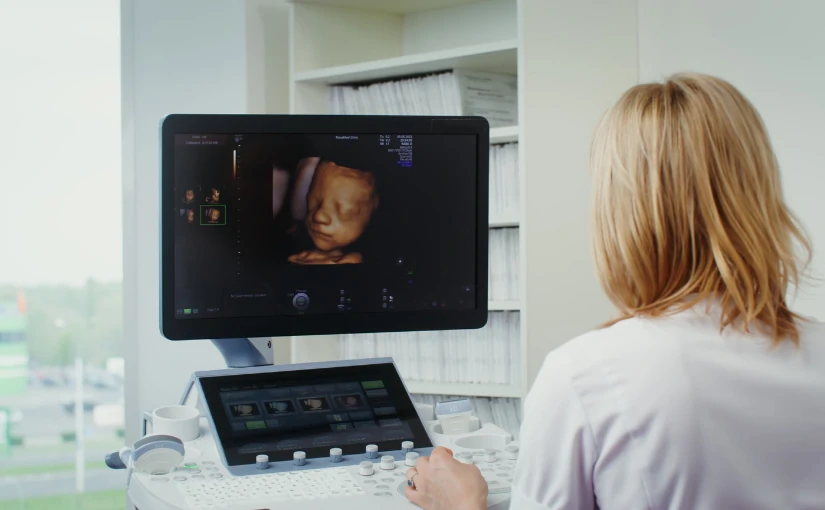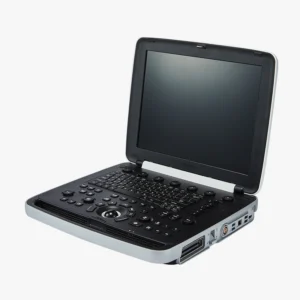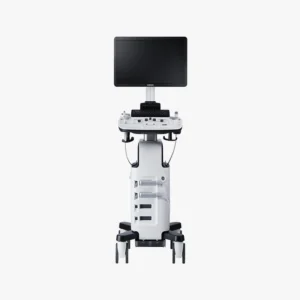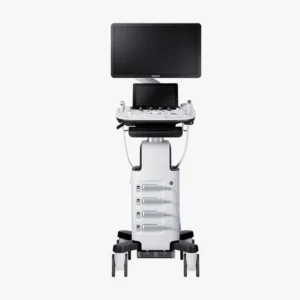
Smart hospital: What is a smart hospital and how does it work?
The hospital management has come a long way from the days when only physical clinical records were used, which were stored on endless shelves and managed manually. For decades, traditional hospitals have focused their operations on rigid administrative and care processes, with a heavy reliance on paper, face-to-face interactions and poorly connected information flows.
However, the advance of digital technologies has marked a turning point in medical care.The introduction of electronic health records in the 1960s was the beginning of the digitalization of the healthcare sector. The introduction of electronic health records in the 1960s was the beginning of the digitization of the healthcare sector, but their mass use in clinical practice was not implemented until the 2000s. Subsequently, other notable innovations also emerged. These included the incorporation of telemedicine solutions, medical equipment with the latest technology, as well as the automation of processes through the use of intelligent management systems and AI software.
In this context, the concept of Smart Hospital. We can define it as a advanced health infrastructure which strategically integrates digital technologies, connectivity and automation to optimize all clinical, care and operational processes. The smart hospital is not simply an evolution of the traditional hospital, but represents an interconnected, automated ecosystem aimed at transforming the experience of patients, professionals and healthcare managers.
In the following article, we discuss the Smart Hospital concept, its differences compared to a traditional hospital, the main technologies and processes it uses, as well as its advantages and limitations.
What is a Smart Hospital?
The concept of Smart Hospital or intelligent hospital arose from the need to improve efficiency, clinical safety and patient experience in a healthcare environment of growing demand and an aging population. The term began to gain relevance in the wake of the second decade of the 21st centurywhen they arose technologies such as the Internet of Things (IoT), artificial intelligence (AI) and Big Data analysis. in the health sector.
The application of these innovations in the clinical setting drove the digital transformation in healthcare. And with it, the traditional hospital evolved through the use of interconnected digital tools to automate processes, facilitate clinical decision-making and improve the quality of care and operations. Today, this is what is known as Smart Hospital.
Essential keys to a Smart Hospital
- Full connectivityMedical equipment, sensors, information systems and applications are connected to each other, facilitating continuous monitoring and unified clinical management.
- Data-driven decision makingReal-time data collection and analysis makes it possible to identify patterns, anticipate clinical events and personalize treatments.
- Patient-centered careHealth professionals can access patients' medical history and establish personalized treatments tailored to their needs. This optimizes healthcare, reducing time, resources and costs for the healthcare system.
- Automation and operational efficiencyRepetitive processes are eliminated and resources are optimized through algorithms, artificial intelligence and robotics, freeing up time for higher-value tasks.
- Flexibility and scalabilityIntelligent hospitals are designed to adapt to new technologies and evolving healthcare needs, ensuring their sustainability over time.
Smart Hospital vs Traditional Hospital: Main differences
The main difference The difference between a Smart Hospital and a traditional hospital lies in the role that technology plays in its operation. While the traditional hospital relies on manual processes, fragmented information and poorly automated management, the smart hospital relies on advanced technologies such as artificial intelligence, the Internet of Things (IoT) and integrated data systems to optimize care and resources.
In a Smart Hospitalthe devices are interconnected, clinical data are updated in real time, and administrative and operational tasks are automated.. This allows professionals to make better clinical decisions, provide personalized care and improve the efficiency of the system. In contrast, in traditional hospitals, decision making tends to depend solely on the clinical judgment of the individual professional; workflows are less efficient and the patient plays a more passive role in the care process.
This transformation not only impacts internal management, but also the patient experience, quality of care and sustainability of the healthcare model.
| Dimension | Traditional Hospital | Smart Hospital |
|---|---|---|
| Clinical information | Paper / digital fragmented | Digital, centralized and in real time |
| Technology | Independent teams | Connected equipment (IoT, sensors, AI) |
| Processes | Manuals, administrative | Automated, with minimal intervention |
| Clinical decisions | Based on individual experience | Supported by AI and data analysis |
| Patient care | Reactive, disease-focused | Proactive, personalized and patient centered |
| Efficiency and management | Wasted resources, slow processes | Continuous optimization of flows and resources |
Smart Hospital technologies and components
The Smart Hospital is based on a advanced technological infrastructure which optimizes clinical processes, improves patient safety and offers more precise, personalized and efficient care.
These technologies do not act in isolation, but are interconnected.The new system generates an intelligent ecosystem where data is collected, analyzed and transformed into high-value clinical and operational decisions. The following is an explanation of the different technologies and components that make this possible. operation of an intelligent hospital:
1. Interoperable Electronic Health Record (EHRi)
This is the fundamental pillar of any Smart Hospital. The Interoperable Electronic Health Record (EHRi) emerged in the 1960s. and allows centralizing all the patient's medical information in a single digital platform. Interoperability is its main value, since it guarantees communication between internal and external systems, such as primary care centers, laboratories, pharmacies, etc.
Artificial Intelligence (AI)
The use of the artificial intelligence in hospitals allows automate tasks, analyze large volumes of data and provide personalized diagnostic or therapeutic recommendations. It applies, among other things, to the medical image analysisThe main objectives are: clinical risk stratification, prediction of complications or optimization of resources.
3. Internet of Medical Things (IoMT)
Includes connected devices such as vital sign monitors, smart infusion pumps, wearables or smart hospital beds. These devices collect real-time data automatically integrated into the Electronic Health Record (EHR)The system allows continuous monitoring without direct human intervention.
4. Clinical Decision Support Systems (CDSS)
Clinical Decision Support Systems (CDSS) are technological tools designed for assisting health professionals in clinical decision makingby means of the intelligent analysis of medical data. These systems do not replace medical judgment, but complement it, providing recommendations, alerts or suggestions based on scientific evidence, clinical guidelines and patient data in real time.
5. Automation and robotics systems
From surgical robots to automated drug distribution systems or internal logistics with autonomous vehicles. These systems reduce human error, improve efficiency, and free up staff time for higher-value care tasks.
6. Network infrastructure and secure digital architecture
Includes high-capacity Wi-Fi networks, cloud storage, secure data centers, and advanced cybersecurity systems.. This architecture is essential to ensure data availability, confidentiality and integrity at all times.
7. Remote care and telemedicine platforms
With the rise of technology and the use of the Internet, the solutions of telemedicine allow remote consultation, diagnosis and follow-up of patients outside of the hospital environment. They are also integrated into home hospitalization, palliative care or chronic disease management programs, which broadens care coverage and improves the patient experience.
8. Digital tools: Apps and web portals
Smart Hospitals offer patients digital tools for managing appointments, accessing your reports, receiving reminders or communicating with your medical team. This component reinforces the patient-centered care modelThe health care system is based on the principle of active participation in the health care process.
Together, these technologies form the foundation on which the Smart Hospital is built: a hyper-connected, automated and value-centered care environment where data flows continuously and securely to optimize every stage of healthcare.
Advantages of the Smart Hospital
The implementation of the Smart Hospital model entails a profound transformation in the way resources are managed, healthcare services are delivered and patient interaction takes place. What advantages do they offer?
1. Improving the quality of health care
Interconnected systems allow for a sharpened focusbased on objective and updated data. Through its use, clinical errors are reduced, processes are standardized and compliance with clinical practice guidelines is facilitated. The result is a safer, more effective and evidence-based medicine.
2. Personalized and patient-centered care
Thanks to advanced analytics and real-time monitoring, Smart Hospitals are able to adapting treatments, anticipating complications and providing care tailored to the individual patient's needs. This improves the care experience and user satisfaction.
3. Resource optimization and operational efficiency
The automation of administrative, logistic and clinical processes reduces waiting times, frees staff from repetitive tasks and improves the allocation of resources (operating rooms, beds, equipment, etc.). Therefore, it has a direct impact on the cost reduction and increased hospital productivity.
4. Faster and more efficient decision making
The availability of integrated clinical data, together with the use of artificial intelligence and decision support systems, enables to act with greater agility in critical situations, perform faster and more accurate medical diagnosticsThe aim is to implement personalized treatments and reduce the occurrence of human errors.
5. Increased monitoring and prevention capacity
The use of IoT-enabled devices and telemedicine platforms enables a continuous patient follow-upboth inside and outside the hospital. This is key to detecting early signs of deterioration, intervening in a timely manner and reducing avoidable hospital admissions.
6. Sustainability and reduction of environmental impact
Digitization of processes, efficient use of energy and intelligent management of hospital infrastructure contribute to the more sustainable process realization. Thus, it is a system more efficient and aligned with the Sustainable Development Goals (SDGs) in health.
Current challenges and barriers to Smart Hospital implementation.
The Smart Hospital concept offers a promising horizon for the transformation of the healthcare system. However, its current implementation still faces significant obstacles and barriers:
High initial investment
Modernization of infrastructures, acquisition of connected devices, implementation of interoperable information systems and deployment of artificial intelligence solutions. require a significant investment. This can be a major limitation for public or smaller healthcare centers.
2. Fragmentation of systems and low interoperability
Many hospitals operate with legacy systems (legacy systems) not integrated with each otherThis hinders the fluid exchange of information. The lack of interoperability between clinical, administrative and external platforms is one of the main limitations of the hospital digital ecosystem.
Organizational change management
The transition from a traditional hospital to an intelligent hospital involves a profound change in the organization of hospital infrastructure. The resistance to change by health professionals or administrative staff, as well as the lack of training in new technologiescan slow down the digital transformation.
4. Cybersecurity and data protection
Massive digitalization and the interconnection of devices increase exposure to cyber-attacks. In this context, it is essential to ensure the security, integrity and confidentiality of clinical data to maintain user confidence and comply with regulations such as the GDPR.
5. Digital divide between professionals and patients
From doctors and professionals to patients, not all users have the same level of digital literacy. This can generate inequalities in the use of technologies, compromising accessibility and equity in health care.
6. Lack of regulatory standardization
The absence of clear and unified regulatory frameworks on the use of artificial intelligence in health care, the medical device regulation and the regulations for the certification of IoMT devices or validation of clinical algorithms slows down the adoption and scalability of these solutions.
Conclusion
In order for the transformation to the Smart Hospital to be truly effective, it is not enough to incorporate advanced technology. It is essential for healthcare managers to adopt a comprehensive vision that combines technological innovation with a solid strategy for organizational change and continuous training of medical personnel. Through a collaborative, cross-cutting and patient-centered approach, it will be possible to ensure an evolution towards a more efficient, safe and sustainable hospital model.
The hospital of the future is not only smarter, it is also more human, more agile and more prepared to respond to the challenges of tomorrow.
Bibliography
Plain Concepts (n.d.). Smart hospitals: what they are and how they will transform the healthcare sector. Retrieved June 19, 2025, from https://www.plainconcepts.com/es/hospitales-inteligentes/
Sánchez, E. (2022, December 15). Smart hospital: smart hospitals, challenges of transition. New Medical Economics. https://www.newmedicaleconomics.es/smart-hospital-hospitales-inteligentes-retos-de-la-transicion/
NVIDIA (n.d.) What is a smart hospital? NVIDIA Latin America Blog. Retrieved June 19, 2025, from https://la.blogs.nvidia.com/blog/que-es-un-hospital-inteligente/
World Health Organization (WHO). (2016). Global diffusion of eHealth: Making universal health coverage achievable. https://apps.who.int/iris/handle/10665/252529
Topol, E. (2019). Deep Medicine: How Artificial Intelligence Can Make Healthcare Human Again. Basic Books.
